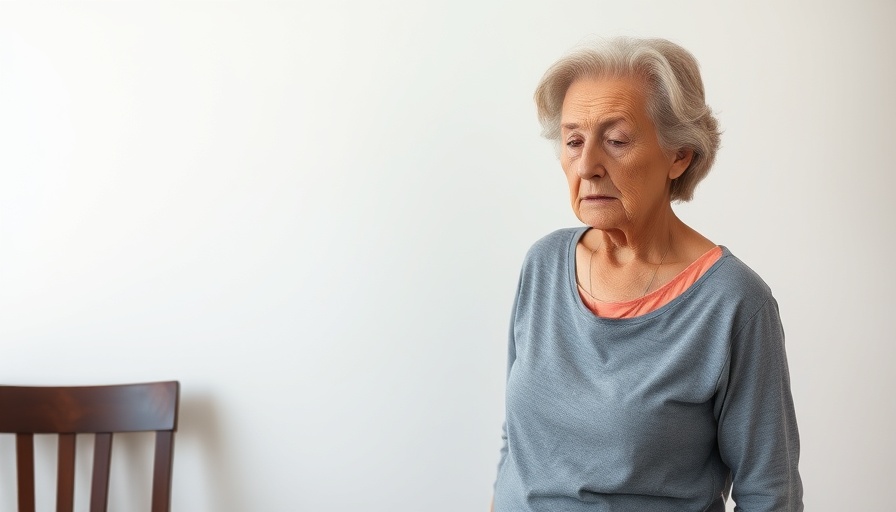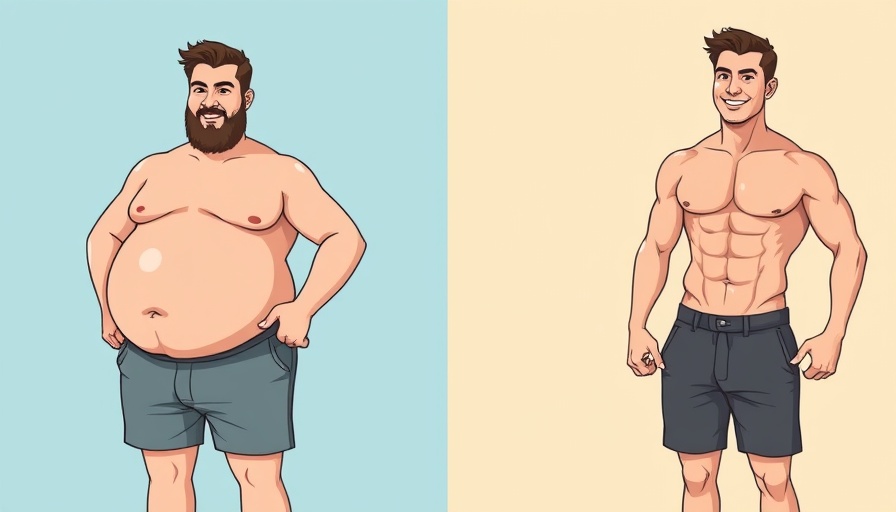
The Importance of Core Strength for Older Adults
As individuals age, maintaining physical strength and stability becomes crucial. According to health experts, the core isn't just about aesthetics; it's fundamental for well-being.
A weak core can contribute to instability, resulting in falls, chronic back pain, and difficulties with routine movements.
Fortunately, research shows that dedicating just 10 minutes a day to core training can have profound benefits, especially for those aged 60 and above.
This insight emphasizes the importance of focusing not only on the superficial muscles but also on deeper core muscles, which are often neglected.
In "Do THIS Everyday for a Stronger Core & Back (Age 60+)", the discussion dives into vital exercises for older adults, prompting a detailed exploration of their long-term benefits.
Understanding the Core's Structure
Think of your core like the trunk of a tree. The outer muscles, akin to bark, provide some superficial support, but it's the inner deep muscles—namely the transverse abdominis and multifidus—that create a robust foundation.
When these deep muscles become weakened due to age or inactivity, individuals may feel strong externally but lack stability internally.
This can lead to a host of issues, from an increased risk of injury to hindered daily activities such as walking or climbing stairs.
Recognizing the underlying anatomy of the core helps in understanding why targeted exercises are essential in enhancing overall stability and balance.
The Connection Between Core Strength and Daily Mobility
Studies highlight a significant correlation between enhanced core strength and improved balance among older adults. A comprehensive study analyzed data from various research projects and confirmed that individuals who engaged in core strengthening exercises reported better balance and mobility.
This transformation can be life-changing, allowing seniors to remain active and reduce their dependence on assistive devices. This outcome stresses the importance of integrating simple core strengthening exercises into one’s daily routine to promote independence and improved quality of life.
Practical Application: A 10-Minute Core Strength Routine
Now that we’ve talked about why core strength matters, let’s break down exactly how to build it—without needing a gym or fancy equipment. In the helpful video "Do THIS Everyday for a Stronger Core & Back (Age 60+)", seniors are guided through a 10-minute daily routine designed to gently strengthen the core and support a healthier back.
Here’s a step-by-step look at each movement, with easy-to-follow instructions you can try at home:
1. Warm-Up and Core Activation (1-2 minutes)
Start by standing or sitting tall with your feet flat on the ground.
How to do it:
Take a deep breath in.
As you exhale, gently pull your belly button in toward your spine—like you’re zipping up a pair of pants.
Hold for 5 seconds while breathing normally, then release.
Repeat this motion 10 times.
Why it works: This simple movement wakes up your core muscles and sets the tone for the rest of your workout. It teaches your body to engage the core in daily activities like standing up or reaching for something overhead.
2. Dead Bug (2 minutes)
Don’t worry—this one is gentler than it sounds!
How to do it:
Lie on your back on a mat or soft surface.
Raise your legs so your knees are bent at a 90-degree angle.
Extend both arms straight up toward the ceiling.
Slowly lower your right arm and left leg toward the floor at the same time, keeping your back flat.
Bring them back up and switch sides.
Do: 8 reps per side, moving with control.
Tip: If lying flat is too hard, try doing this seated with just the arms or legs.
Why it works: The Dead Bug is fantastic for strengthening the deep core muscles that stabilize your spine and help prevent back pain.
3. Modified Crunch (2 minutes)
A safer, back-friendly version of the traditional crunch.
How to do it:
Lie on your back with knees bent and feet flat.
Cross your arms over your chest or gently place them behind your head (don’t pull on your neck).
Slowly lift your head, neck, and upper shoulders just a few inches off the floor.
Hold for 2–3 seconds, then lower back down.
Do: 10–12 gentle reps.
Why it works: This targets the front of your core (your abs), which supports posture, helps with balance, and makes movements like getting up from a chair easier.
4. Modified Bird Dog (2–3 minutes)
Great for balance, coordination, and strengthening your back muscles.
How to do it:
Start on hands and knees (you can put a folded towel under your knees for comfort).
Slowly extend your right arm forward and left leg back. Try to keep your back flat and hips steady.
Hold for 3–5 seconds, then return to starting position.
Switch sides.
Do: 6–8 reps per side.
Chair Option: If getting on the floor is difficult, do this from a chair by lifting one arm and the opposite leg while sitting tall.
Why it works: This move improves core stability and balance—both essential for preventing falls and keeping a strong posture.
5. Stretch and Cool Down (2 minutes)
Knees to Chest Stretch:
Lie on your back and gently hug both knees toward your chest.
Hold for 20 seconds, breathing slowly.
Repeat twice.
Child’s Pose (or Seated Forward Fold):
From your hands and knees, slowly sit back onto your heels, arms reaching forward and forehead toward the floor.
If you’re in a chair, you can lean forward and reach toward your toes instead.
Why it works: Stretching after strengthening helps reduce stiffness, increase flexibility, and prevent soreness.
The Takeaway
Doing this 10-minute routine daily or even just a few times a week can lead to big changes over time. You may notice less lower back pain, better balance, and a stronger feeling of stability when walking, lifting, or bending. And best of all? You can do it from the comfort of your living room, at your own pace.
Start small, listen to your body, and be consistent. Even 10 minutes a day is a powerful step toward a healthier, more confident you.
Overcoming Common Misconceptions About Aging and Strength
Many seniors may believe that as they age, they must accept decreased mobility and strength. This pervasive myth can deter individuals from seeking the benefits of strength training.
In reality, with appropriate guidance and committed effort, older adults can not only retain but also enhance their functional strength and mobility. It’s about recognizing that core training is not just for the young or athletic but essential for everyone, particularly seniors who wish to maintain their independence and vitality.
Future Insights: The Growing Importance of Holistic Fitness
As our society continues to age, the focus on holistic fitness will only intensify. Evidence suggests that as older adults incorporate fitness routines that focus not only on strength but also on flexibility, balance, and endurance, they tend to experience a higher quality of life.
Embracing a comprehensive approach to wellness through core strength offers promising opportunities for better health outcomes.
For those living in Sacramento and surrounding areas, joining community fitness programs targeted towards seniors can provide not only exercise but also social interaction, which is invaluable for mental health. Fitness centers and community programs can provide resources and support that ensure older adults stay engaged in their wellness journeys.
Conclusion: A Call to Action for Stronger Living
The journey towards a stronger core and back begins with a simple commitment to daily exercise. If you’re eager to enhance your quality of life and maintain your independence, consider adopting the 10-minute core routine discussed in the video.
Your body—and your future self—will thank you. Take the next step by integrating these exercises into your daily routine and exploring community resources around Sacramento to further bolster your fitness journey.
 Add Row
Add Row  Add
Add 





 Add Row
Add Row  Add
Add
Write A Comment